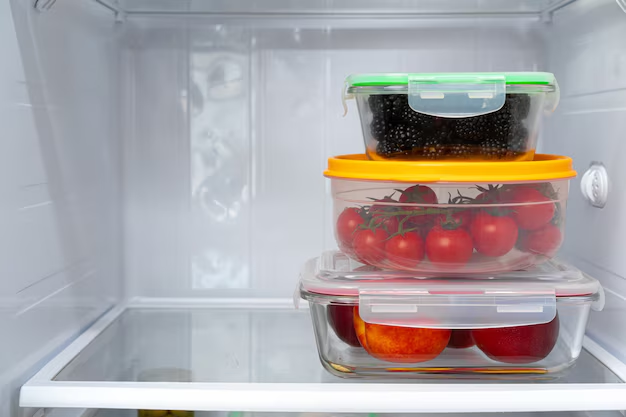Can You Safely Transport a Refrigerator Laying Down?
Transporting a refrigerator may seem straightforward—pack it up, put it in the vehicle, and head off. However, many people face a crucial dilemma: Is it safe to transport a refrigerator laying down? This question comes up frequently in home moves and appliance deliveries, and for a good reason. Moving such a large piece of equipment without causing damage requires knowledge and careful handling. In this guide, we will explore this topic from multiple perspectives, ensuring you have the information you need to make informed decisions and avoid costly mistakes.
🏠 Home Moves and the Refrigerator Challenge
When preparing for a move, it's natural to focus on moving boxes, furniture, and knick-knacks. However, appliances like refrigerators require special attention. Due to their size and weight, transporting refrigerators poses a unique set of challenges that go beyond ensuring they fit through doorways or corridors.
Why Upright Transport Is Ideal
Transporting a refrigerator upright is widely recommended. Here's why:
Compressor Safety: The compressor in a refrigerator contains oil that can leak into the cooling lines when the unit is laid flat. Once this happens, the refrigerator can experience reduced cooling efficiency or even fail entirely.
Structural Considerations: Refrigerators are designed to stand upright. Laying them down places stress on various components that are not meant to bear pressure horizontally.
Avoid Damage: Upright transport minimizes the likelihood of creases or dents to doors and frame.
So, why would anyone transport a refrigerator any other way? Often, it's due to vehicle constraints or lack of knowledge about the potential risks involved.
🚚 Situations Where Laying Down Might Occur
Certain situations may compel you to consider laying a refrigerator down during transport. Understanding these and their potential consequences can help you mitigate risks.
Vehicle Limitations
Space Constraints: Smaller transport vehicles can drive the need to lay a refrigerator down. Given their limited vertical space, this may appear the only viable solution.
Precarious Conditions: Sometimes, logistical challenges (such as narrow doors or steep stairs) might lead movers to tip their refrigerator temporarily.
DIY Moves
Cost Efficiency: Individuals choosing to move without professional movers may lack a truck with sufficient height to accommodate an upright refrigerator.
Unawareness: People new to handling appliances might not yet be aware of the potential issues with horizontal transport.
🌐 Understanding the Mechanics: How Refrigerators Work
To fully grasp the potential implications of laying a refrigerator down during transport, a brief overview of its mechanics is useful.
The Role of the Compressor
The compressor is the heart of a refrigerator's cooling system. It pumps refrigerant through coils, pulling heat from inside and releasing it outside. Within the compressor, oil ensures smooth operation. This oil, when displaced from its normal location, can impair the functioning of the appliance.
Coolant Lines
Coolant lines are thin tubing through which refrigerant circulates. When a refrigerator is tilted or laid down, these lines can receive oil contamination, or in some cases, even become subject to kinks or bends, compromising cooling efficiency.
🛠 Practical Steps if You Must Lay It Down
If upright transport isn't possible, several precautions can be taken to safeguard your refrigerator:
Preparation Before Moving
Empty the Appliance: Remove all food, shelves, and drawers to prevent shifting, which could cause damage.
Secure the Doors and Cord: Use tape or bungee cords to ensure that the doors and power cord are secured and will not open or drag during transport.
Choose the Right Side: If you must lay the appliance on its side, place it on the side that's opposite to the hinges. This allows the doors to remain in alignment and minimizes structural strain.
During Transit
Drive Smoothly: Avoid jolts or sudden stops. Smooth driving reduces jostling and potential for internal damage.
Cushion Contacts: Use soft padding under and around the fridge to minimize direct pressure damage.
Post-Transport Protocol
Let It Stand: Once moved, allow the refrigerator to stand upright at its new location for several hours before plugging it in. This time allows the compressor oil to settle back into place.
Check for Damage: Look for any visible coolant leaks or body damage. If the fridge appears compromised, consult a repair technician before use.
🔍 Misconceptions and Myths
When it comes to transporting refrigerators, a cloud of myths and half-truths can mislead even the most well-intentioned mover. Here are some prevalent misconceptions:
All Refrigerators Are the Same
Not all refrigerators can tolerate being laid down equally. While older models were more resilient, modern units with complex arrangements of delicate components are more likely to incur damage—notably those featuring French doors, icemakers, or intricate electronics.
Short Transport Time Doesn't Matter
Time is a factor, but even short transports can dislodge compressor oil or bend cooling lines if handled incorrectly. Regardless of duration, all transports warrant careful planning and execution.
📋 Key Takeaways: Safely Transporting Your Fridge
Here’s a handy summary to guide you through safe refrigerator transport:
⭐ Avoid Laying Flat: Always opt to transport refrigerators upright where possible.
🔧 Prepare Thoroughly: Empty the appliance and secure movable components before transport.
🛡️ Post-Transport Care: Allow it to stand and stabilize before use.
👀 Inspect for Integrity: Check for damages or leaks upon arrival.
🚫 Use Caution with Side Laying: If essential, lay on the opposite side of the hinges and secure doors tightly.
🚀 Empowerment Through Knowledge
Understanding the implications of transporting a refrigerator ensures you can make informed decisions during a move. Whether you plan to handle transportation yourself or hire professionals, being engaged and knowledgeable enables smoother, less stressful moves.
While it can seem daunting, tackling the specifics of moving large appliances pays dividends in the form of a fully functional refrigerator at the end of your move. So next time you're getting ready for a move, remember these guidelines to make sure your fridge arrives at its next destination in perfect condition.
